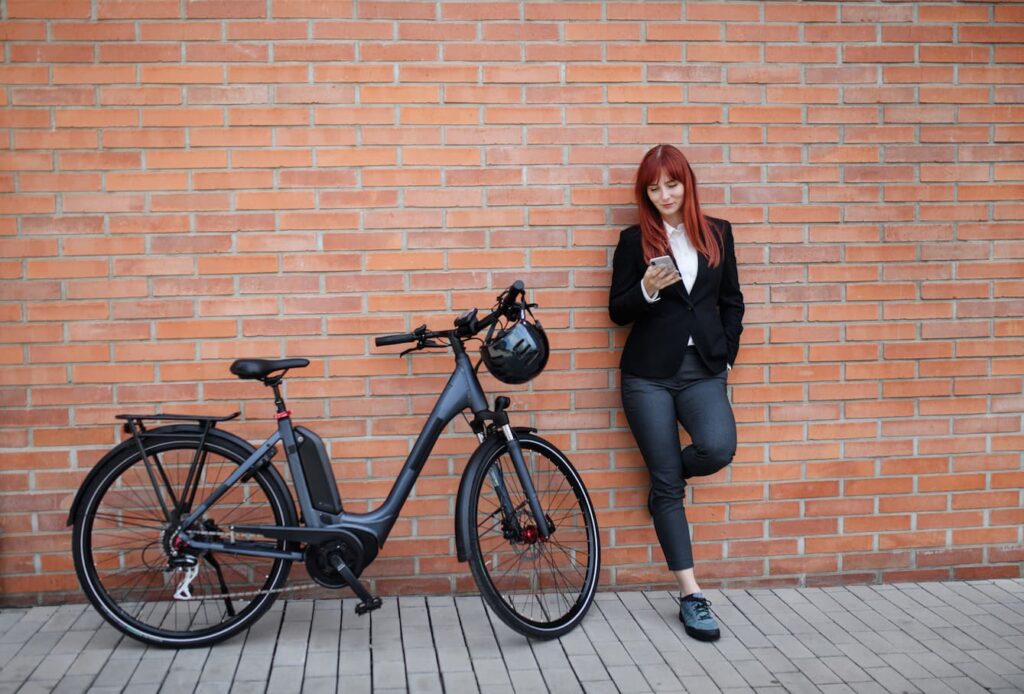
Admit it. You’re intrigued. You’re even a bit jealous. You see people walking or biking to work and you wish you were doing the same.
You want the exercise, or want to save money, or maybe you just want to do a little more to reduce vehicle emissions. Whatever your reason, when does using active transportation make sense?
Active transportation, such as cycling, walking or using other human-powered modes of transportation, can make sense in various situations.
Here are some scenarios where using active transportation might be an option for your daily commute:
Short Distances – Active transportation is most practical for short distances. For those on foot, anything less than three miles is doable. For cycling, it can depend on your fitness level. According to discerningcyclist.com, someone with an average fitness level can bike about 10 miles in an hour.
“A beginner might manage a 10-mile commute, taken steadily,” Carol Vine wrote on the site. “But it could take a couple of months to build up to commuting five days a week.”
According to the site, anything less than 5 miles is considered an “easy” ride, while commutes of 11-15 miles are “very difficult” and should be undertaken by experienced, serious riders.

Urban Areas – In more urban areas, active transportation not only makes a lot of sense, but it can also be faster than driving when there is a lot of congestion. Areas with bike lanes allow cyclists to skip to the front of the line and advance quicker than a driver who is stuck several car lengths back and risks missing the light.
“If you’re in a city, the chances are your cycle commute won’t take that much longer than by car or public transport, and it may even be quicker in rush hour,” Vine wrote.
Cost Savings – Owning a car can be expensive. Walking is free, and a reliable bike can be purchased relatively inexpensively. the cost to use other active transportation is minimal, even gas-powered and e-bikes are far less expensive to run and maintain than a motor vehicle.
Weather – Tucson’s moderate climate is ideal for using active transportation. Even in the summer morning, temperatures are tolerable. That does not mean every day is perfect for active transportation. On rainy, hot or those rare cold days, it may make sense to skip the ride or walk.
Accessibility – Using active transportation is easier if your place of work can accommodate it. Is there a secure place to park your bike? Are there shower facilities or places to change out of your biking gear?
Maybe it does not make sense to use active transportation on your daily commute, but that does not mean it cannot be used at other times for short errands or visits. There are many benefits to bypassing the car.
Environmental Considerations – Maybe you can’t bike to work, but that does not mean you can’t skip a car ride to help the environment. Bike or walk to the store, to a friend’s or to get that cup of coffee. Reducing the amount of driving leads to a reduction in carbon emissions and air pollution.
According to the Environmental Protection Agency, the average passenger vehicle emits about 411 grams of carbon dioxide per mile, which is almost a pound of CO2. Even a few skipped car trips can have an impact on air quality, which can especially benefit more vulnerable populations.
The Center for Environmental Excellence explains that improving air quality by reducing vehicle emissions provides benefits for everyone, but larger “benefits are seen in children, older adults, and individuals with respiratory diseases.”
Health Benefits – Even if used for transportation, walking or cycling is still exercise and a great way to incorporate physical activity into your daily routine. Just a few extra trips by bike or foot can help with weight management, cardiovascular health, and overall well-being.
“Active transportation allows people to be physically active in everyday life by enabling them to walk or bike to their destinations,” noted Raul Castillo in impactsciences.com. “Even a moderate amount of daily exercise can improve both physical and mental health. Important benefits include lowering the risk of heart disease, reducing high blood pressure, and relieving stress.”
Community Engagement – Active transportation can enhance a sense of community by allowing people to interact with each other and their surroundings. People out for a walk, run or ride see others and can get to know those familiar faces.
“When residents are out on foot or bike, they interact more with their neighbors,” Castillo said. “Streets become safer, not just in terms of traffic but crime as well since there are more eyes on the street from pedestrians and cyclists. Active transportation can build community and create social capital.”
Whether you use active transportation for your daily commute or just to grab an occasional cup of coffee, the impacts can be felt in the environment, in the community and with yourself. Learn more about whether active transportation is right for you.


